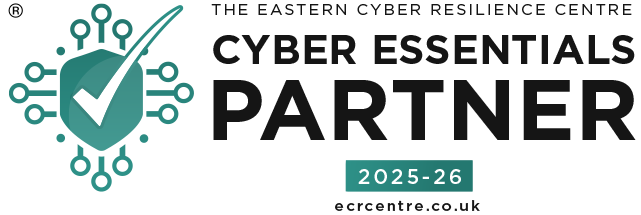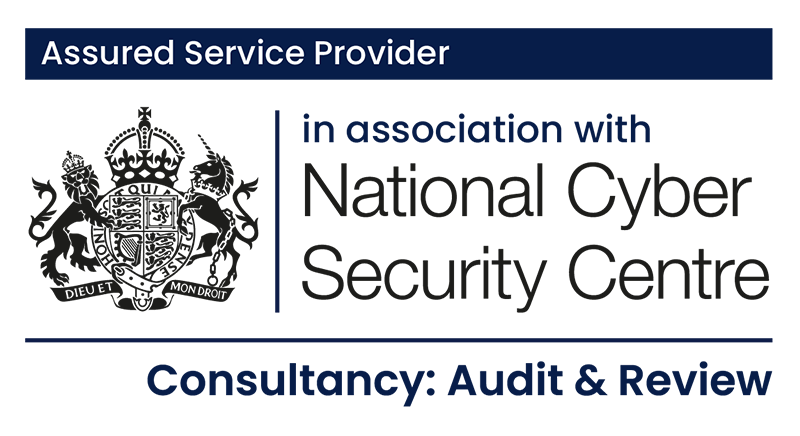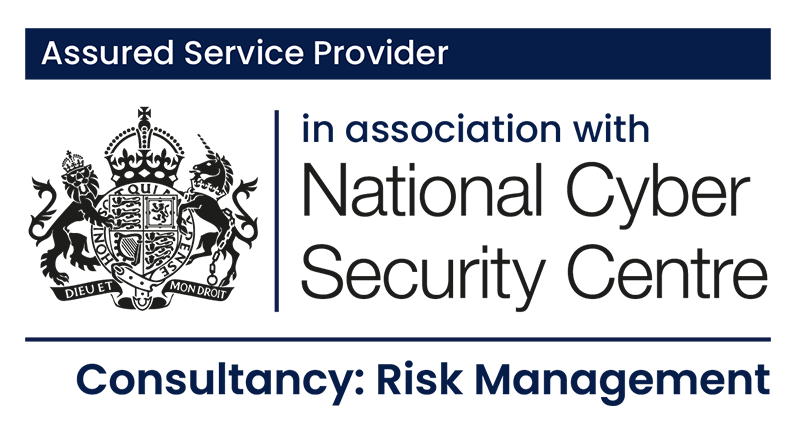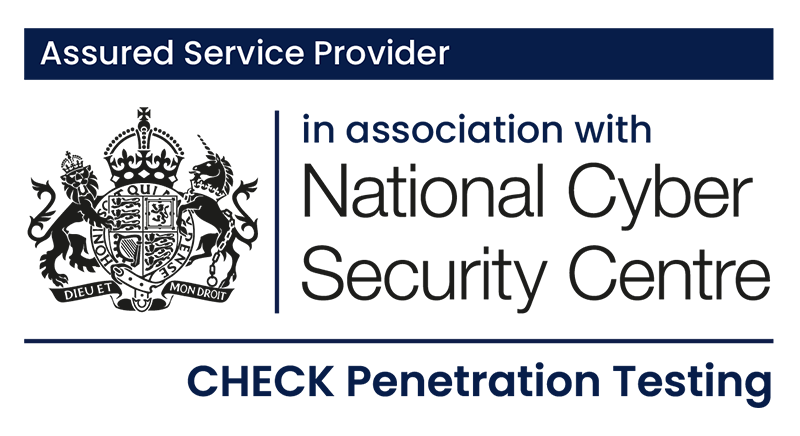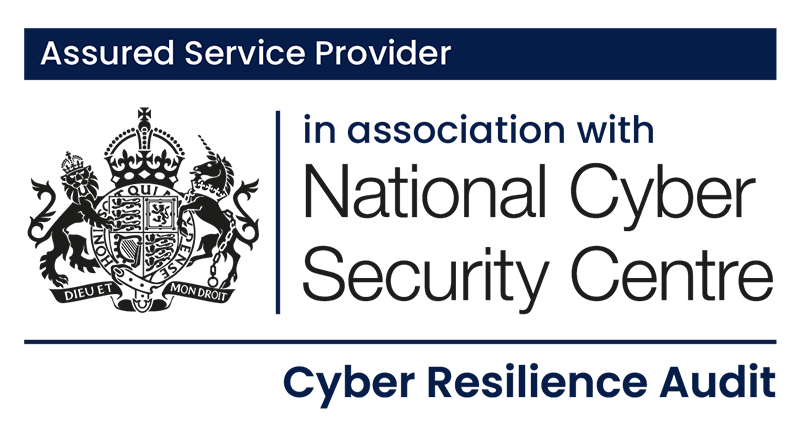Cyber threats are evolving at an unprecedented pace, growing more sophisticated and harder to detect. In response, organisations are investing heavily in cutting-edge technologies, from firewalls and encryption to AI-powered threat detection systems. While these tools are essential, there is a growing tendency to rely too heavily on technology alone, overlooking a crucial element in the cyber security equation – people.
It is often said that humans are the weakest link in security, but this narrative is outdated and misleading. In reality, people can be the strongest line of defence, when they are properly trained, supported, and empowered. Cyber security is not just a technical challenge; it is a human one. The ability to recognise phishing attempts, follow secure practices, and respond swiftly to incidents often determines whether an attack succeeds or fails.
People are not the weakest link; they are the critical differentiator. At Cyberfort we believe it is time to shift the focus and invest in human resilience as much as technological strength.
Human Factor
According to the 2025 Verizon Data Breach Investigations Report (DBIR), approximately 60% of all confirmed breaches involved a human action, whether it was clicking on a malicious link, falling victim to social engineering, or making an error like misdelivering sensitive data. This statistic underscores a critical truth, while technology plays a vital role in cyber security, human behaviour remains a central factor in both risk and resilience. Rather than viewing people as the problem, organisations must recognise them as a powerful part of the solution. With the right training, awareness, and support, employees can become proactive defenders, identifying threats, reporting anomalies, and making informed decisions that technology alone cannot.
Culture and Behaviour
At the heart of a cyber resilient organisation is a culture that values open communication, psychological safety, and shared responsibility. These cultural traits shape the everyday behaviours that determine how effectively an organisation can prevent, detect, and respond to cyber threats.
Employees are encouraged, not punished, for reporting risks, mistakes, or suspicious activity. This openness ensures that potential threats are surfaced early and addressed quickly. Silence, often driven by fear of blame, is replaced with transparency and trust.
Mistakes are treated as learning opportunities. By shifting from a blame culture to a learning culture, organisations empower employees to speak up, share insights, and continuously improve. This mindset fosters resilience and agility in the face of evolving threats.
Cyber security is seen as everyone’s job, not just IT’s. When employees understand how their actions impact the organisation’s security, they are more likely to adopt secure behaviours and support one another in doing the same.
Human Judgement vs Tech
Even the most advanced AI systems cannot replicate human intuition. While automated tools are essential for detecting known threats at scale, they often lack the contextual awareness and critical thinking that trained employees bring to the table. A vigilant team member who questions a suspicious email or flags unusual behaviour can catch what algorithms might overlook. Their ability to escalate concerns quickly can mean the difference between a contained incident and a full-scale breach.
Humans provide reasoning, context, and prioritisation, qualities that machines cannot fully emulate. Cyber resilience is not just about identifying threats; it is about balancing risk, cost, and operational impact. These are nuanced decisions that require human understanding and judgment.
Technology is powerful, but it is people who make it effective. Empowered employees are not just part of the defence; they are the heart of it.
Cross Functional Collaboration
Cyber resilience is not the sole responsibility of the IT or security team; it is a shared effort that spans the entire organisation. Building a truly resilient posture requires cross-functional collaboration, bringing together departments like HR, Legal, Communications, Risk, and Operations. Each team plays a unique and vital role in preparing for, responding to, and recovering from cyber incidents.
• HR ensures that security awareness is embedded into onboarding, training, and culture.
• Legal helps navigate regulatory obligations, breach notification requirements, and liability concerns.
• Communications manage internal and external messaging during a crisis to maintain trust and transparency.
• Operations and Risk assess business impact and coordinate continuity plans.
One of the most effective ways to strengthen this collaboration is through crisis simulations and tabletop exercises. These simulations test not just technical responses, but decision-making, communication, and coordination across teams, turning theory into practice and exposing gaps before real threats strike.
Leadership
Leadership and management play a pivotal role in shaping an organisation’s cyber resilience culture. When leaders actively model good security behaviour, such as using strong passwords, reporting phishing attempts, and following data protection protocols, they send a powerful message – cyber security is everyone’s responsibility. Their actions set the tone from the top, influencing how employees perceive and prioritise security in their daily work.
This leadership commitment must extend to the board level, where cyber security is treated as a strategic business risk, not just a technical issue. Board-level accountability ensures that resilience is embedded into governance, risk management, and long-term planning. When directors ask the right questions and demand regular updates on cyber posture, it reinforces the importance of security across the organisation.
Buy-in from management is not just symbolic; it is strategic. Leaders must champion resilience initiatives, allocate resources for training, and integrate cyber security into broader business goals. They also play a key role in setting behavioural norms, reinforcing secure practices through communication, recognition, and consistent example.
When leadership leads by example, from the boardroom to the front line, cyber resilience becomes part of the culture, not just a compliance checkbox.
From Theory to Practice
Organisational Resilience
A well-trained workforce is not just a support function; it is a frontline defence and a cornerstone of cyber resilience. True resilience is achieved when cyber security is embedded into the values, behaviours, and everyday actions of everyone in the organisation, not just the IT or security teams. This means cultivating a culture where security is second nature, from how emails are handled to how data is shared and stored.
Embedding this mindset requires more than annual training modules. It involves ongoing education, leadership buy-in, and visible reinforcement of secure behaviours. For example, Microsoft has implemented a company-wide security culture program that includes regular phishing simulations, gamified learning experiences, and executive-led security briefings. These initiatives are tailored to different roles and risk levels, ensuring relevance and engagement across the board.
The result? Employees become active participants in defence, spotting threats early, responding appropriately, and reinforcing a culture of vigilance and accountability.
Engaging Training
Cyber security training must go beyond the traditional “check-the-box” approach. To be effective, it needs to be engaging, relevant, and continuous. This means using storytelling, real-world scenarios, interactive simulations, and up-to-date threat examples that resonate with employees’ daily experiences. When training is relatable and dynamic, it not only captures attention but also builds lasting awareness and practical skills.
Effective training empowers staff to detect and respond to threats quickly, reducing the risk of breaches and enabling them to contribute to the development and safe use of new technologies. It also fosters a culture where security is seen as a shared responsibility, not just an IT concern.
A standout example is Google’s Security and Privacy Training Program, which uses gamified learning, phishing simulations, and scenario-based exercises tailored to different roles. Employees are regularly tested with real-time challenges, and the program evolves with emerging threats, keeping security top of mind and skills sharp.
Recognition and Reward
Recognising and rewarding good cyber security behaviour is a powerful way to reinforce a culture of resilience. When employees feel that their efforts to stay secure are noticed and appreciated, they are more likely to remain vigilant and engaged. Celebrating individuals or teams who demonstrate strong cyber hygiene, such as reporting phishing attempts, following secure data handling practices, or contributing to awareness initiatives, helps normalise and encourage these behaviours across the organisation.
Recognition does not have to be complex. It can range from shout-outs in team meetings and internal newsletters to formal awards or incentives. The key is consistency and visibility.
A best practice example comes from an American company called Salesforce, which runs a “Security Champions” program. Employees across departments are nominated for their proactive security efforts and receive public recognition, exclusive training opportunities, and branded rewards. This not only boosts morale but also builds a network of internal advocates who help spread security awareness organically.
By celebrating the right behaviours, organisations reduce human error and strengthen their first line of defence, their people.
Review and Response
Cyber security is most effective when it is treated as a shared responsibility, not just an IT function. One of the most impactful ways to reinforce this is by regularly collecting feedback from employees on what is working, what’s unclear, and where improvements are needed. This two-way dialogue encourages ownership, reinforces learning, and helps build a culture of vigilance and continuous improvement.
Feedback mechanisms can include anonymous surveys, post-training evaluations, suggestion boxes, or open forums during team meetings. The key is to act on the feedback, showing employees that their insights lead to real changes.
A best practice example comes from a UK company called PwC, which integrates cyber security feedback loops into its broader risk culture program. After simulations or incidents, employees are invited to share their experiences and suggestions. This feedback is then used to refine training, update policies, and improve response plans. The result is a more engaged workforce and a security strategy that evolves with real-world input.
By listening to employees and responding meaningfully, organisations not only improve their defences but also foster a sense of collective responsibility and trust.
Case Studies
Click on the navy blue boxes below to read each case study.
In 2024, a major breach occurred at Shared Services Connected Ltd (SSCL), a contractor for the UK Ministry of Defence. The incident compromised sensitive payroll data for over 272,000 current and former military personnel, including personal and financial information.
While the breach was executed through external compromise, investigations pointed to inadequate internal controls and oversight, including poor access management and insufficient employee awareness of data handling risks. This case underscores how human oversight and weak internal processes can expose even highly sensitive government data to exploitation.
Several human-led response actions were taken to contain the damage and begin recovery:
- Immediate Government Oversight and Transparency: UK Defence Secretary Grant Shapps addressed Parliament, confirming the breach and identifying SSCL as the contractor involved. This public acknowledgment helped establish transparency and accountability from the outset.
- Rapid Notification and Support for Affected Personnel: The Ministry of Defence prioritised notifying individuals whose home addresses and financial details were exposed. Affected personnel were offered access to commercial data protection services, including credit monitoring and alerts for suspicious activity.
- Cross-Government Review and Human Oversight: The Cabinet Office launched a full review of SSCL’s work across government, not just within the MoD. This involved bringing in specialist analysts to assess internal controls, data handling practices, and contractor oversight, a clear example of human-led auditing and governance.
- Focus on Cultural and Procedural Reform: The breach prompted a broader conversation about internal oversight, employee awareness, and access management. While technical fixes were part of the response, the emphasis on reviewing human processes and decision-making reflects a shift toward strengthening the human layer of cyber resilience.
These actions demonstrate how, even after a breach caused in part by human oversight, people were central to the response and recovery, from leadership transparency to operational containment and long-term cultural reform.
Several high-profile UK retailers, including Marks & Spencer, Harrods, and Co-op, were targeted in ransomware attacks where human error played a central role. In these cases, employees were tricked into clicking malicious links or downloading infected attachments, allowing attackers to gain access to internal systems.
These incidents highlight the ongoing vulnerability of even well-resourced organisations when cyber hygiene and awareness are not embedded across all levels. In response, many of these companies have since implemented enhanced phishing simulations, role-based training, and stricter access controls to reduce human risk.
The recovery was driven by people:
M&S also launched internal awareness campaigns to reinforce secure behaviours and prevent future incidents.
- IT and cyber security teams worked around the clock to isolate affected systems and restore operations.
- The CEO issued a public apology, reinforcing transparency and accountability.
- Customer service teams were mobilised to support affected users, including guiding them through password resets and addressing concerns about data exposure.
- M&S also launched internal awareness campaigns to reinforce secure behaviours and prevent future incidents.
Co-Op was targeted in an attempted ransomware attack. However, human vigilance made the difference:
- The IT security team detected the intrusion early and took proactive steps to shut down systems before the ransomware could fully deploy.
- This quick action minimised disruption, keeping stores and websites operational.
- Co-op issued clear internal guidance to its 70,000 staff, including instructions to keep cameras on during remote meetings and avoid recording calls, a move aimed at preventing further exploitation.
- The company praised its internal teams for their rapid, coordinated response, which helped contain the breach and protect customer data.
These incidents show that while human error can open the door to cyber threats human action, when empowered and prepared, is also the key to resilience and recovery.
Final Thoughts
Technology will always be a cornerstone of cybersecurity, enabling detection, automation, and defence at scale. But technology alone cannot adapt, reason, or care. It is people who bring resilience to life. They are the ones who notice the unusual, ask the right questions, escalate concerns, and recover systems under pressure.
By investing in your people, educating, empowering, and engaging them, you do not just build a secure organisation, you build a resilient one. One that can anticipate, absorb, and adapt to threats, not just react to them.
Cyber resilience is not just about systems, firewalls, or AI. It is about culture, communication, and collective responsibility. It is about creating an environment where every individual understands their role in protecting the organisation and feels confident to act.
In the end, resilience is not built by machines, it is built by people. And its people who will make the difference when it matters most.
For more information about Cyberfort Cyber Resilience services please contact us at [email protected].


